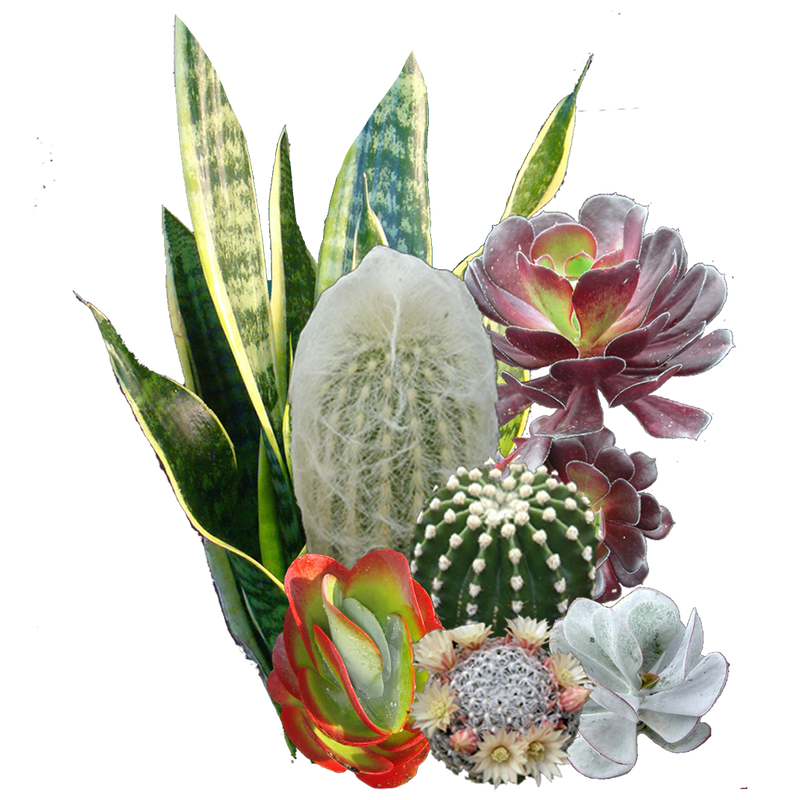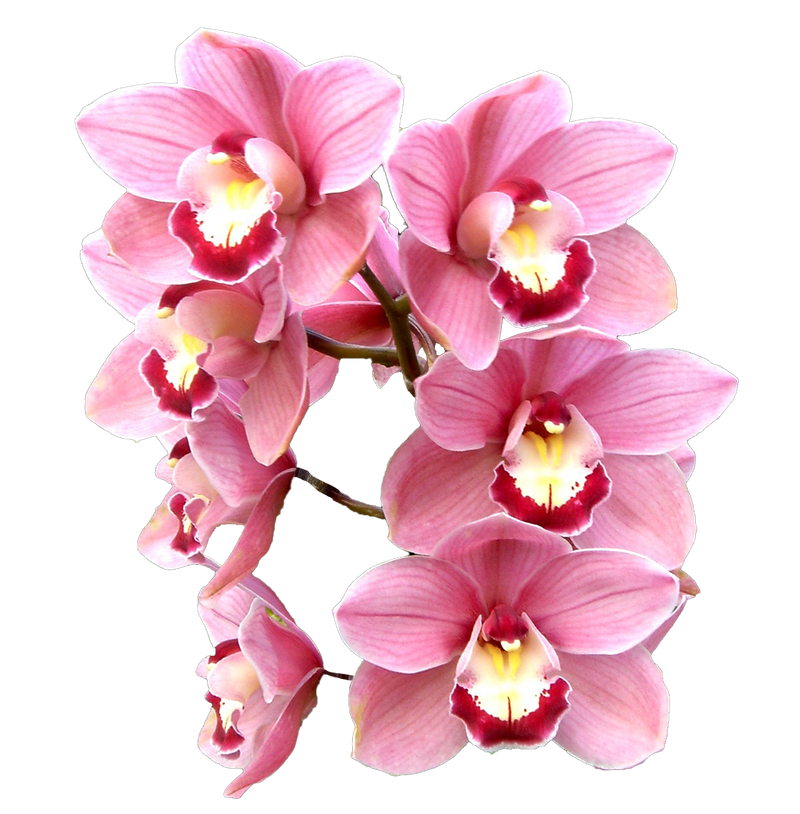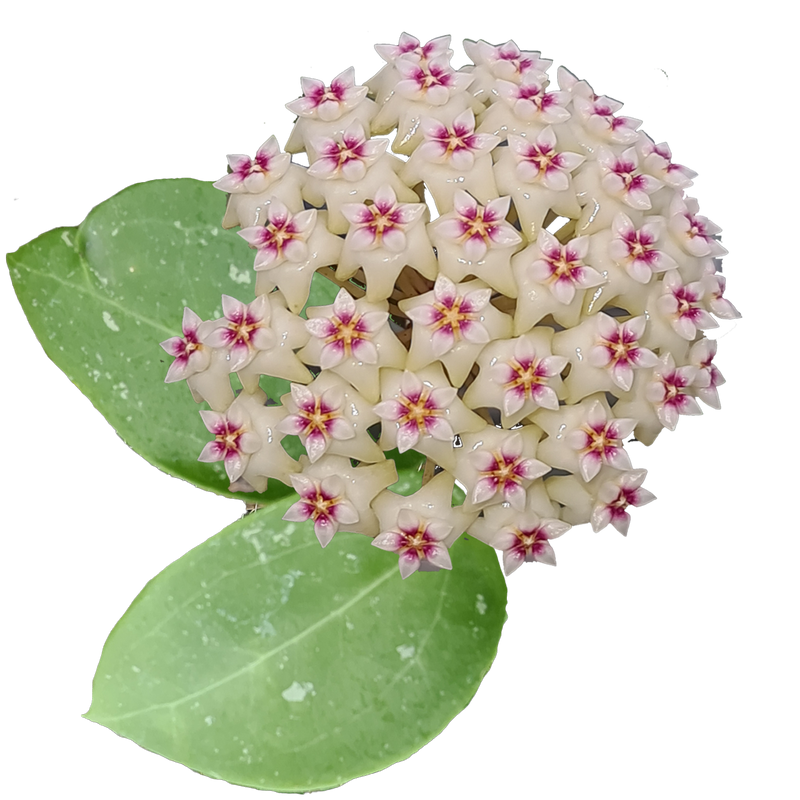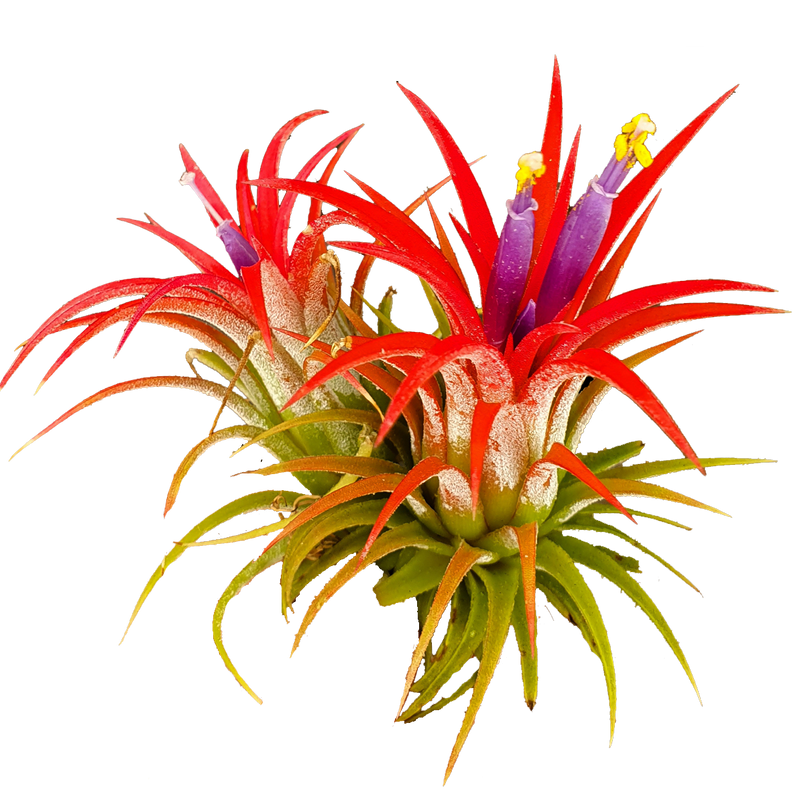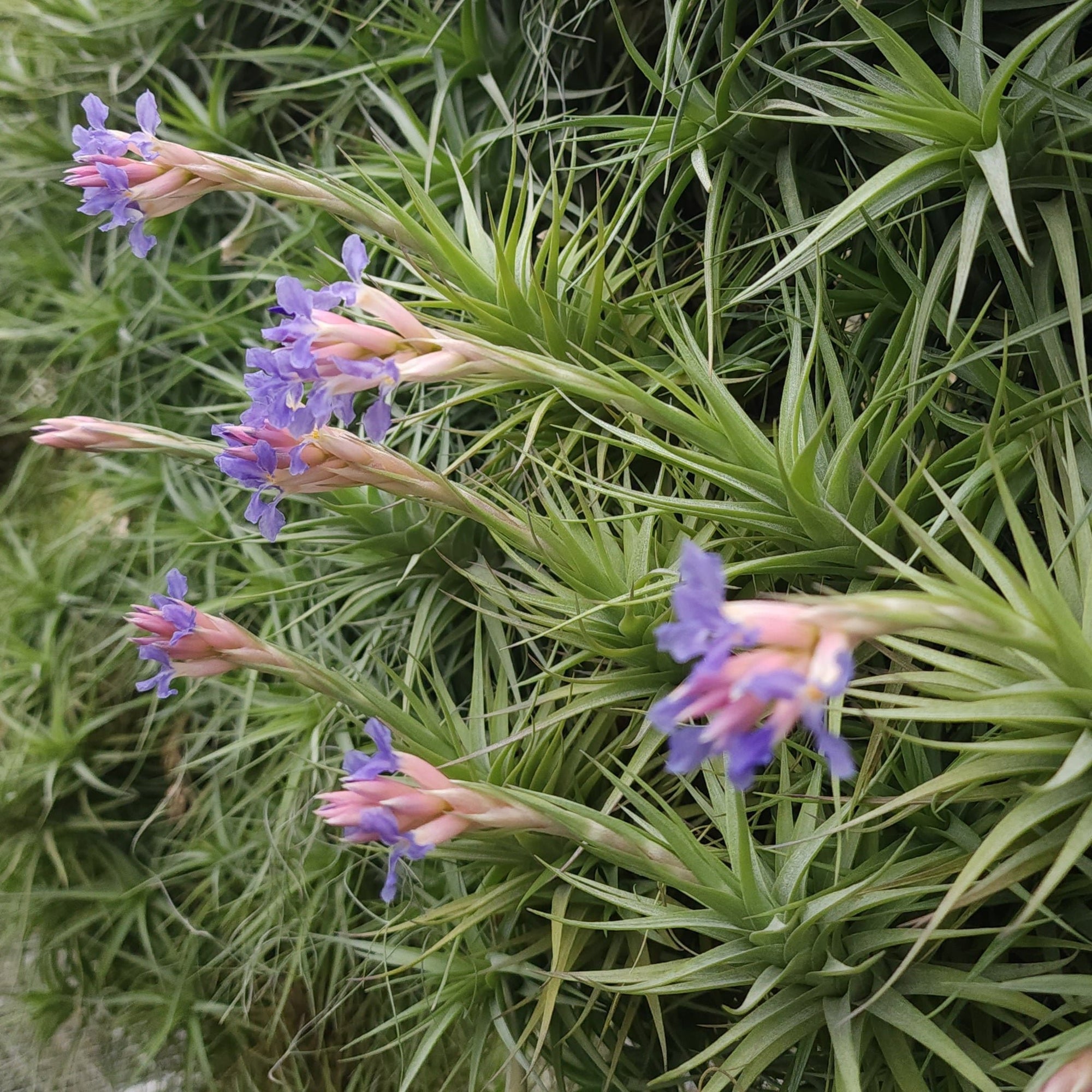
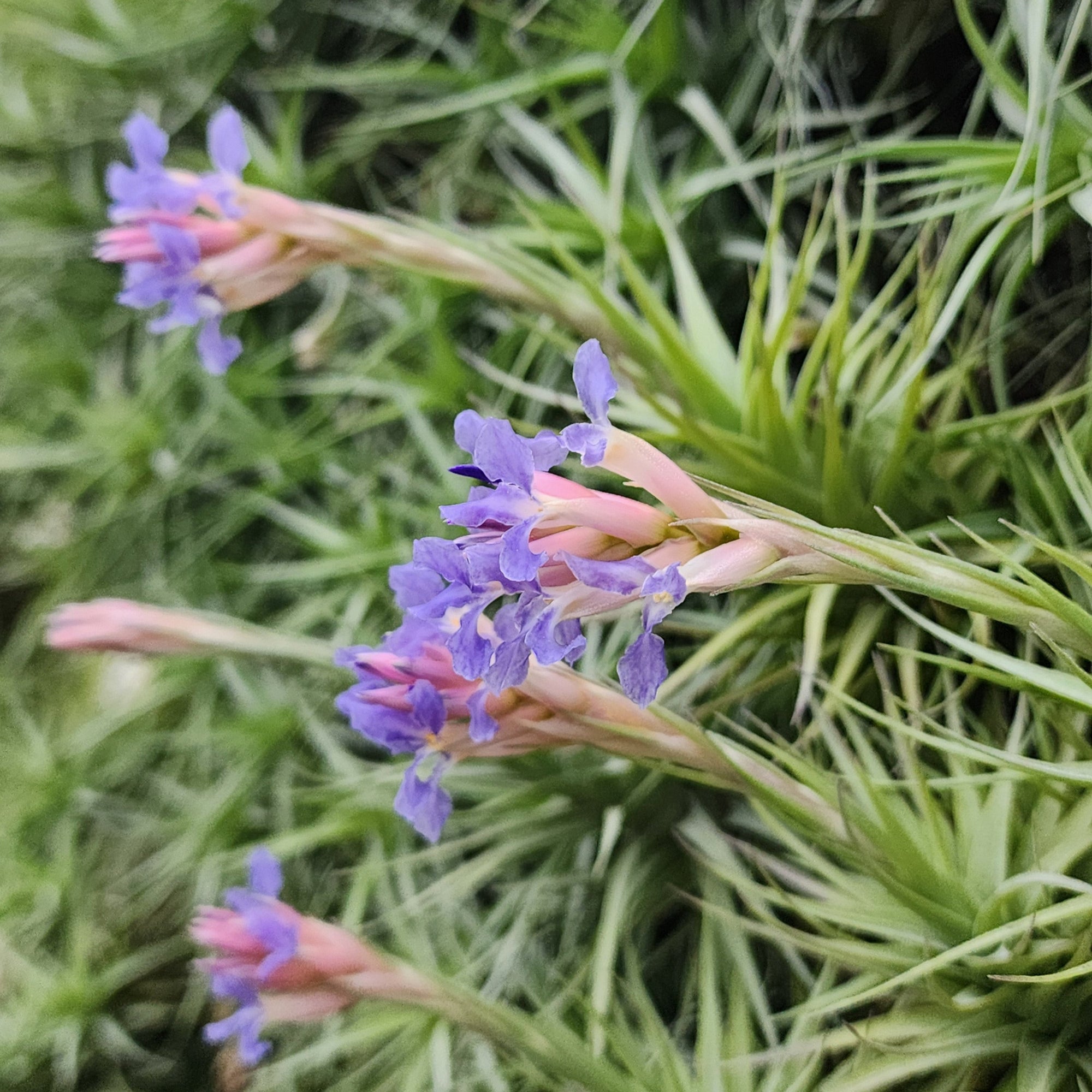
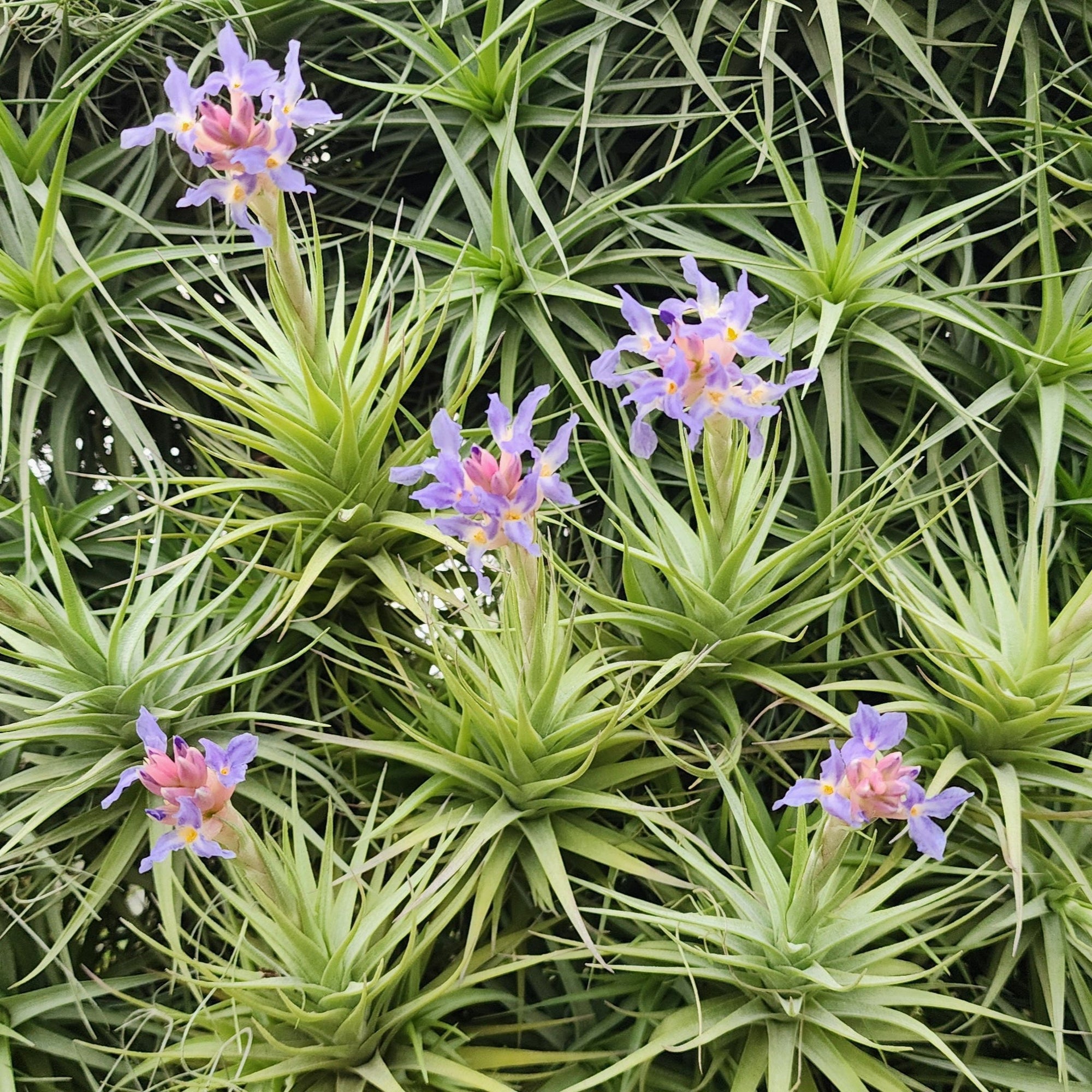
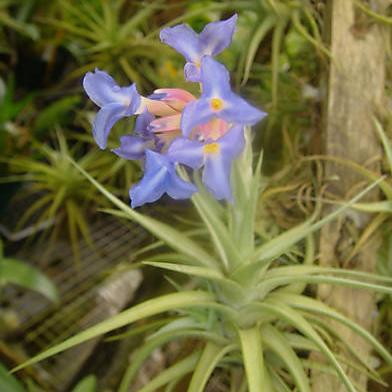

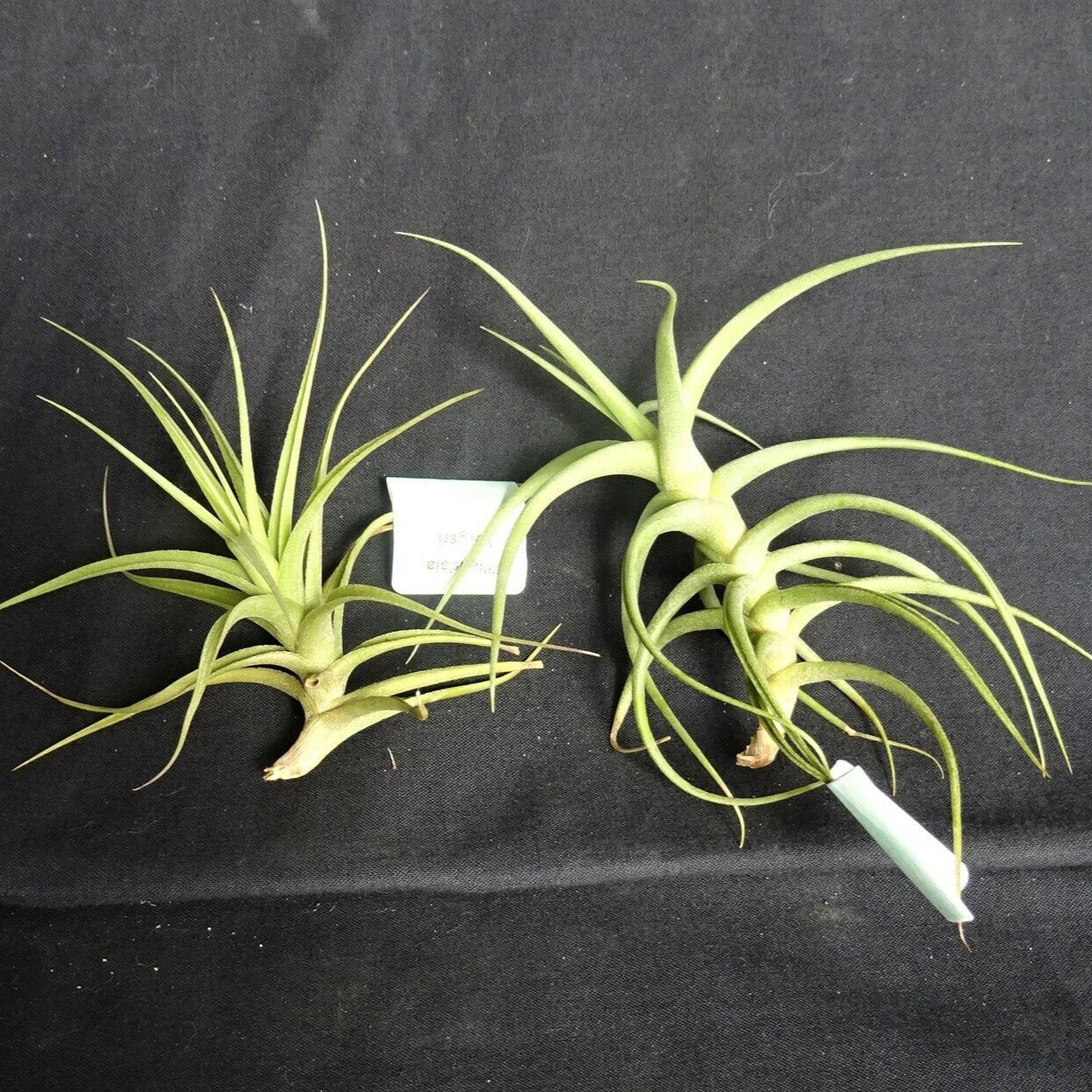
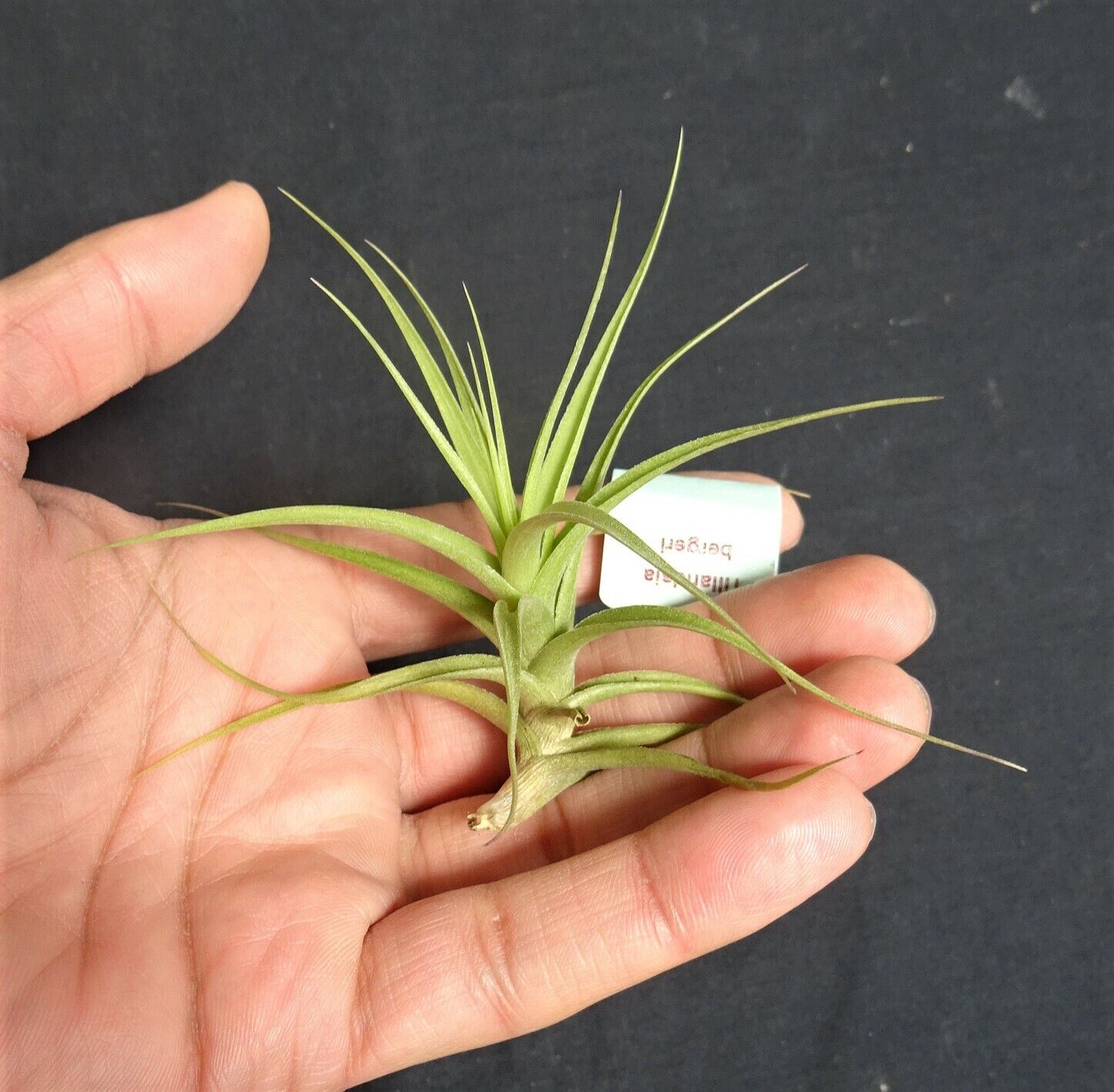
Tillandsia bergeri
check_circle In Stock
Tillandsia bergeri is a hardy, clump-forming air plant native to southern Brazil, typically found growing on rocks or tree branches in open, sunny environments. It has stiff, grey-green leaves arranged in a loose rosette, covered with fine trichomes. This species is known for its ability to produce offsets readily, forming large, dense clusters over time. The inflorescence is short and typically bears several pale blue to violet flowers, often with a slight curve to the petals.
Care Tips
- Light: Bright, indirect light is best. Avoid harsh direct sunlight, which can scorch the delicate leaves. An east-facing windowsill is often ideal.
- Water: Mist the plant thoroughly 2-3 times a week, ensuring that excess water drains away. Alternatively, you can soak the plant in a bowl of water for 20-30 minutes once a week. Allow the plant to dry completely before returning it to its display location. This is important to prevent rot.
- Air Circulation: Good air circulation is crucial for Tillandsias. Ensure that the plant is not placed in a stagnant or enclosed environment. A light breeze or a position near a fan can be beneficial.
- Temperature: Maintain warm temperatures between 15-29°C (59-85°F) for optimal growth. Avoid exposing this hardy air plant to cold draughts or frost.
- Fertiliser: Use a diluted bromeliad or orchid fertiliser once a month during the growing season (spring and summer). This will help to encourage healthy growth and flowering.
- Mounting: Tillandsia bergeri can be mounted on various surfaces, such as driftwood, cork bark, or even decorative rocks. Use fishing line, wire, or glue to securely attach the plant to its mount. Be sure to choose a mount that allows for good air circulation around the plant.
Shipping Schedule and Biosecurity Information
expand_more
Dispatch & Shipping Information
Non-Biosecurity States (QLD, NSW, ACT, VIC, SA): We now offer two dispatches per week for these regions:
- Tuesday Dispatch: Orders placed by Sunday 11:59 PM AEST.
- Friday Dispatch: Orders placed by Wednesday 11:59 PM AEST. Orders placed after these cut-offs will be dispatched on the next available day.
Biosecurity States (WA, NT, TAS): These orders require mandatory biosecurity treatment (PHC) and follow a specific weekly schedule:
- Cut-off: Orders must be placed by Thursday 11:59 PM AEST.
- Dispatch Day: Orders are processed over the weekend and dispatched on Tuesday.
Plant Health Certification (PHC) Fees:
- $20 fee applies to WA orders.
- $10 fee applies to NT and TAS orders. This fee is per order (not per plant) and is included in your shipping costat checkout.
Important Note: We operate independently from Collectors Corner. For any enquiries, please refer to our contact page

Size: large











